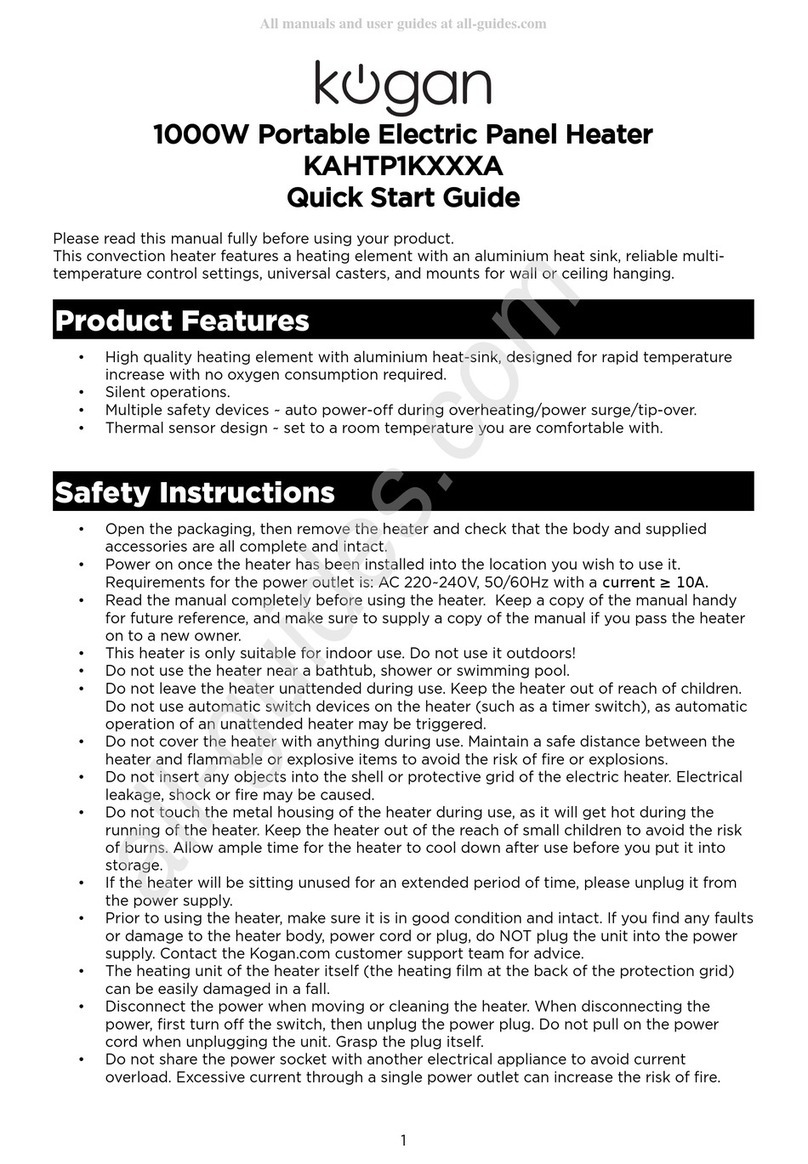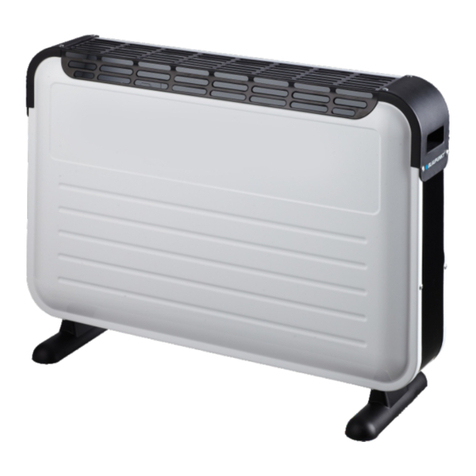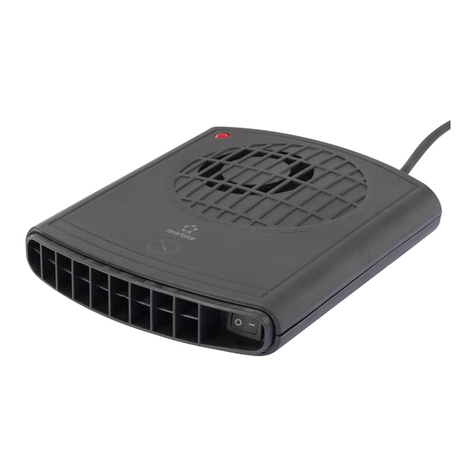Geostar ASTON SERIES User manual

INSTALLATION MANUAL
HEATING | COOLING | HOT WATER
ASTON SERIES INDOOR SPLIT


Table of Contents
Model Nomenclature . . . . . . . . . . . . . . . . . . . . . . . . . . . . . . . . . . . . . . . . . . . . . . . . . . . . . . . . . . . . . . 4
General Installation Information . . . . . . . . . . . . . . . . . . . . . . . . . . . . . . . . . . . . . . . . . . . . . . . . . . . . .5-9
Water Quality . . . . . . . . . . . . . . . . . . . . . . . . . . . . . . . . . . . . . . . . . . . . . . . . . . . . . . . . . . . . . . . . . . . . 9
Closed Loop - Ground Source Systems. . . . . . . . . . . . . . . . . . . . . . . . . . . . . . . . . . . . . . . . . . . . . 10-11
Open Loop - Well Water Systems . . . . . . . . . . . . . . . . . . . . . . . . . . . . . . . . . . . . . . . . . . . . . . . . . . . 12
Hot Water Generator Connections . . . . . . . . . . . . . . . . . . . . . . . . . . . . . . . . . . . . . . . . . . . . . . . . .13-14
Electrical Connection . . . . . . . . . . . . . . . . . . . . . . . . . . . . . . . . . . . . . . . . . . . . . . . . . . . . . . . . . . .15-16
Electronic Thermostat Installation . . . . . . . . . . . . . . . . . . . . . . . . . . . . . . . . . . . . . . . . . . . . . . . . .16-17
Electrical Data . . . . . . . . . . . . . . . . . . . . . . . . . . . . . . . . . . . . . . . . . . . . . . . . . . . . . . . . . . . . . . . . . . 17
Dimensional Data. . . . . . . . . . . . . . . . . . . . . . . . . . . . . . . . . . . . . . . . . . . . . . . . . . . . . . . . . . . . . . . . 18
Physical Data . . . . . . . . . . . . . . . . . . . . . . . . . . . . . . . . . . . . . . . . . . . . . . . . . . . . . . . . . . . . . . . . . . . 19
Model Nomenclature - Air Handler. . . . . . . . . . . . . . . . . . . . . . . . . . . . . . . . . . . . . . . . . . . . . . . . . . . 20
Coil Data - Air Handler . . . . . . . . . . . . . . . . . . . . . . . . . . . . . . . . . . . . . . . . . . . . . . . . . . . . . . . . . . . . 20
Compatibility Guide - Air Handler. . . . . . . . . . . . . . . . . . . . . . . . . . . . . . . . . . . . . . . . . . . . . . . . . . . . 20
Physical Data - Air Handler. . . . . . . . . . . . . . . . . . . . . . . . . . . . . . . . . . . . . . . . . . . . . . . . . . . . . . . . . 21
Model Nomenclature - Coil. . . . . . . . . . . . . . . . . . . . . . . . . . . . . . . . . . . . . . . . . . . . . . . . . . . . . . . . . 21
Refrigerant Coil Compatibility. . . . . . . . . . . . . . . . . . . . . . . . . . . . . . . . . . . . . . . . . . . . . . . . . . . . . . . 21
The AuroraTM Control System. . . . . . . . . . . . . . . . . . . . . . . . . . . . . . . . . . . . . . . . . . . . . . . . . . . . .22-27
Reference Calculations . . . . . . . . . . . . . . . . . . . . . . . . . . . . . . . . . . . . . . . . . . . . . . . . . . . . . . . . . . . 28
Legend . . . . . . . . . . . . . . . . . . . . . . . . . . . . . . . . . . . . . . . . . . . . . . . . . . . . . . . . . . . . . . . . . . . . . . . . 28
Wiring Schematics . . . . . . . . . . . . . . . . . . . . . . . . . . . . . . . . . . . . . . . . . . . . . . . . . . . . . . . . . . . . .29-30
Refrigeration. . . . . . . . . . . . . . . . . . . . . . . . . . . . . . . . . . . . . . . . . . . . . . . . . . . . . . . . . . . . . . . . . .31-33
Line Set Sizes. . . . . . . . . . . . . . . . . . . . . . . . . . . . . . . . . . . . . . . . . . . . . . . . . . . . . . . . . . . . . . . . . . . 33
Pressure/Temperature Conversion Chart for R-410A. . . . . . . . . . . . . . . . . . . . . . . . . . . . . . . . . . . . . 34
Unit Startup. . . . . . . . . . . . . . . . . . . . . . . . . . . . . . . . . . . . . . . . . . . . . . . . . . . . . . . . . . . . . . . . . . .35-37
Operating Parameters . . . . . . . . . . . . . . . . . . . . . . . . . . . . . . . . . . . . . . . . . . . . . . . . . . . . . . . . . .38-39
Pressure Drop . . . . . . . . . . . . . . . . . . . . . . . . . . . . . . . . . . . . . . . . . . . . . . . . . . . . . . . . . . . . . . . . . . 40
Refrigerant Circuit Guideline . . . . . . . . . . . . . . . . . . . . . . . . . . . . . . . . . . . . . . . . . . . . . . . . . . . . . . . 41
Thermistor Resistance . . . . . . . . . . . . . . . . . . . . . . . . . . . . . . . . . . . . . . . . . . . . . . . . . . . . . . . . . . . . 41
Heat of Extraction/Rejection Data . . . . . . . . . . . . . . . . . . . . . . . . . . . . . . . . . . . . . . . . . . . . . . . . . . . 42
Troubleshooting . . . . . . . . . . . . . . . . . . . . . . . . . . . . . . . . . . . . . . . . . . . . . . . . . . . . . . . . . . . . . . .43-45
Preventative Maintenance . . . . . . . . . . . . . . . . . . . . . . . . . . . . . . . . . . . . . . . . . . . . . . . . . . . . . . . . . 46
Replacement Procedures. . . . . . . . . . . . . . . . . . . . . . . . . . . . . . . . . . . . . . . . . . . . . . . . . . . . . . . . . . 46
Service Parts List . . . . . . . . . . . . . . . . . . . . . . . . . . . . . . . . . . . . . . . . . . . . . . . . . . . . . . . . . . . . . . . . 47
Revision Guide. . . . . . . . . . . . . . . . . . . . . . . . . . . . . . . . . . . . . . . . . . . . . . . . . . . . . . . . . . . . . . . . . . 49

4
Model Nomenclature
ASTON INDOOR SPLIT SERIES INSTALLATION MANUAL
10 3
1-2 4 5-7 8 9
Model Type
10 - Aston
Type
3–Indoor Split
Vintage
* - Factory Use Only
Unit Capacity (MBTUH)
022, 026, 030, 036,
038, 042, 048, 049
060, 064, 070, 072
Future Option
A–None
Future Option
A - None
Voltage
1–208-230/60/1
Hot Water Generation & GeoStart Option
0–No HWG, No GeoStart®
1–HWG with Factory Installed Pump, No GeoStart
3–No HWG, GeoStart
4–HWG with Factory Installed Pump, GeoStart
Future Option
0 - Standard
Controls
A–AuroraTM Base Control
Future Option
0–Standard
Future Option
0–Standard
Coax Option
C–Copper
N–CuproNickel
Future Option
A–None
Rev.: 08 October 2013D
10 11 12 14
*049 A A 1 0 A C 0
13
0
15
A
16
0
17
3

5
Installing and servicing heating and air conditioning equipment can
be hazardous due to system pressure and electrical components.
Only trained and qualified service personnel should install, repair or
service heating and air conditioning equipment. Untrained personnel
can perform the basic maintenance functions of cleaning coils
and cleaning and replacing filters. All other operations should be
performed by trained service personnel. When working on heating
and air conditioning equipment, observe precautions in the literature,
tags and labels attached to the unit and other safety precautions that
may apply, such as the following safety measures:
• Follow all safety codes.
• Wear safety glasses and work gloves.
• Use a quenching cloth for brazing operations.
• Have a fire extinguisher available for all brazing operations.
Moving and Storage
Move units in the normal “up” orientation. Units may be moved and
stored per the information on the packaging. Do not stack more
than three units in total height. Do not attempt to move units while
stacked. When the equipment is received, all items should be
carefully checked against the bill of lading to be sure all crates and
cartons have been received. Examine units for shipping damage,
removing the units from the packaging if necessary. Units in
question should also be internally inspected. If any damage is noted,
the carrier should make the proper notation on the delivery receipt,
acknowledging the damage.
Unit Location
NOTE: Prior to setting the unit in place, remove and discard the
compressor shipping bolt located at the front of the compressor
mounting bracket.
Locate the unit in an indoor area that allows for easy removal of
the access panels. Location should have enough space for service
personnel to perform maintenance or repair. Provide sufficient room
to make water, electrical and refrigerant line connections. Any
access panel screws that would be difficult to remove after the unit
is installed should be removed prior to setting the unit. Care should
be taken when units are located in unconditioned spaces to prevent
damage from frozen water lines and excessive heat that could
damage electrical components.
Air Coil Location
Refer to the air handler manufacturer’s instructions for the blower coil
unit for details on installing the air handling portion of the system.
Condensate Drain
Follow the blower coil manufacturer’s instructions.
WARNING: Before performing service or maintenance
operations on a system, turn off main power switches
to the indoor unit. If applicable, turn off the accessory
heater power switch. Electrical shock could cause
personal injury.
Safety Considerations Duct System
All blower coil units/air coils must be installed as specified by the
manufacturer’s installation instructions; however, the following
recommendations should be considered to minimize noise and
service problems.
An air filter must always be installed upstream of the air coil on
the return air side of the air handler or furnace. If there is limited
access to the filter rack for normal maintenance, it is suggested
that a return air filter grill be installed. Be sure that the return duct
is properly installed and free of leaks to prevent dirt and debris
from bypassing the filter and plugging the air coil.
In applications using galvanized metal ductwork, a flexible duct
connector is recommended on both the supply and return air
plenums to minimize vibration from the blower. To maximize sound
attenuation of the unit blower, the supply and return plenums
should include an internal duct liner of 1-inch thick glass fiber or
be constructed of ductboard. Insulation is usually not installed in
the supply branch ducts. Ducts in unconditioned areas should be
wrapped with a minimum of 1-inch duct insulation. Application of
the unit to uninsulated ductwork in an unconditioned space is not
recommended as the unit’s performance will be adversely affected.
If the air handler is connected to existing ductwork, a previous
check should have been made to assure that the duct system has
the capacity to handle the air required for the unit application. If
ducting is too small, as in replacement of heating only systems,
larger ductwork should be installed. All existing ductwork should be
checked for leaks and repairs made accordingly. The duct systems
and diffusers should be sized to handle the design airflow quietly.
If air noise or excessive airflow is a problem, the blower speed can
be changed to a lower speed to reduce airflow. This will reduce the
performance of the unit slightly in heating; however, it will increase
the temperature rise across the air coil. Airflow must still meet
minimum requirements.
Equipment Selection
The following guidelines should be used when mating a indoor split
to an air handler/coil.
• Select R-410Acomponents only.
• Select 13 SEER or higher air handler/coil.
• Match the air handler to the air handler coil data table.
• Indoor matching adjustable TXV should be used with any air
handler/coil. Fixed orifice or cap tube systems should not be used.
Utilizing Existing Coil or Air Handler
It is recommended that a new R-410A air handler be installed with a
indoor split considering the long term benefits of reliability, warranty,
etc. versus the short term installation cost savings. However, the
existing air handler may be retained provided the following:
• Coil currently is R-410Arated
• Coil uses a TXV. No capillary or fixed orifice systems should
be used
• Alife expectancy of more than 7 years remaining for the air
handler and components
• Flush air coil and line set
General Installation Information
ASTON INDOOR SPLIT SERIES INSTALLATION MANUAL

6
When utilizing the existing air coil or line set, only flushing
compounds that vaporize should be used; which means they are
packaged in a pressurized disposable cylinder. It is preferable
to use a flushing agent that removes oil, water, and acid, plus, is
biodegradeable and non-toxic. The flushing agent should be safe to
use with both HCFC and HFC refrigerants. Once a flushing agent
has been selected, follow the instructions provided with the product.
The first step should be purging the lines or air coil with nitrogen.
Purging with nitrogen first will remove some of the particulate and
residual oil which will allow the flushing agent to work better. Never
blow the flushing agent through a compressor, filter drier, or txv as it
will cause the components to fail.
When flushing is complete and the final system is assembled, an
acid check should be preformed on the system. Acid test kits are
available from most HVACR distributors.
Connection to Air Coil
Figures 1 and 2 illustrate typical indoor split installations. Reference
the Line Set Sizes table for typical line set diameters and maximum
length. Line sets over 60 feet are not recommended. Longer line
sets will significantly reduce capacity and efficiency of the system
as well as adversely effect the system reliability due to poor oil
return. If the line set is kinked or deformed and cannot be reformed,
the bad section of pipe should be replaced. A restricted line set will
affect unit performance.As in all R-410A equipment, a reversible
liquid line filter drier is required to insure all moisture is removed
from the system. This drier should be replaced whenever “breaking
into” the system for service. All line sets should be insulated with
a minimum of 1/2 in. closed cell insulation. All exterior insulation
should be painted with UV resistant paint or covering to ensure long
insulation life.
Air Handler Installation
Air handlers used with dual capacity units must be capable
of operating with a minimum of 2 blower speeds. Refer to the
manufacturer’s instructions for the blower coil unit for details on
installing the air handling portion of the system. All blower coil
units/air coils must be installed as specified by the manufacturer’s
installations instructions. However, the following recommendations
should be considered to minimize noise and service problems.
An air filter must always be installed upstream of the air coil on the
return air side of the air handler or furnace. If there is limited access
to the filter rack for normal maintenance, it is suggested that a return
air filter grille be installed. Be sure that the return duct is properly
installed and free of leaks to prevent dirt and debris from bypassing
the filter and plugging the air coil.
Ensure that the line set size is appropriate to the capacity of the
unit (refer to Line Set Sizes table). Line sets should be routed as
directly as possible, avoiding unnecessary bends or turns. All wall
penetrations should be sealed properly. Line set should not come
into direct contact with water pipes, floor joists, wall studs, duct
work, floors, walls and brick. Line set should not be suspended
from joists or studs with a rigid wire or strap which comes into direct
contact with the tubing. Wide hanger strips which conform to the
shape of the tubing are recommended. Isolate hanger straps from
line set insulation by using metal sleeves bent to conform to the
shape of insulation. Line set insulation should be pliable, and should
completely surround the refrigerant line.
NOTES: Improper installation of equipment may result in
undesirable noise levels in the living areas.
Figure 1: Typical Split System Application with Remote Blower Coil
Disconnect
Thermostat Wire
From Air Handler
VibrationAbsorbing Pad or Air Pad
P/T Plugs
Water Out
Water In
Lineset To Air Handler
Insulated Suction Line
Supply
Duct Wire To
Thermostat
Return
Duct
Condensate Drain
(must be trapped)
To D r a i n
Remote Air Handler
(Maximum Recommended Distance is
60' Between Units)
DHW In
DHW Out
General Installation Information cont.
ASTON INDOOR SPLIT SERIES INSTALLATION MANUAL

7
Dual Fuel Systems
Indoor split units can be connected to fossil fuel furnaces that
include an A-coil or slab coil. Dual fuel installations utilize the
geothermal heat pump for heating until the point that auxiliary
heat is called for on the thermostat. At that point, the furnace will
be enabled and the heat pump will be disabled. The geothermal
heat pump provides air conditioning through the furnace’s
refrigerant coils.
Refer to the furnace manufacturer’s installation manual for
the furnace installation, wiring and coil insertion. A Dual Fuel
thermostat, a field-installed SPST relay or dual capacity
auxiliary heat relay is required. See Figure 2 for typical Dual
Fuel application.
Figure 2: Typical Split System Heat Pump Coil Add-On Fossil Fuel Furnace
In add-on indoor split applications, the coil should be located in
the supply side of the furnace to avoid condensation damage
to the furnace heat exchanger. A high temperature limit should
be installed upstream of the coil to de-energize the compressor
whenever the furnace is operating. Without this switch, the
indoor split will trip out on high pressure. A dual fuel thermostat
can remove the Y1 and Y2 calls when a W call is energized to
allow gas furnace backup on a indoor split application. Refer to
thermostat wiring diagram for details.
Wire To
Thermostat
Up-Flow
Fossil Fuel
Furnace
Condensate
Drain
(must be trapped)
"A" or
Slab Coil
Supply Duct
Air Temperature Limit Switch -
to prevent compressor operation
when entering air is greater than
90°F.
Return
Duct
Disconnect
VibrationAbsorbing Pad or Air Pad
P/T Plugs
Water Out
Water In
Lineset To Air Handler
Insulated Suction Line
DHW In
DHW Out
Thermostat
Wire From
Air Handler
Maximum Recommended Distance
is 60' Between Units
General Installation Information cont.
ASTON INDOOR SPLIT SERIES INSTALLATION MANUAL

8
Water Piping
The proper water flow must be provided to each unit whenever the
unit operates. To assure proper flow, use pressure/temperature
ports to determine the flow rate. These ports should be located at
the supply and return water connections on the unit. The proper
flow rate cannot be accurately set without measuring the water
pressure drop through the refrigerant-to-water heat exchanger.
All source water connections on residential units are swivel piping
fittings (see Figure 3) that accept 1 in. male pipe threads (MPT).
The swivel connector has a rubber gasket seal similar to a rubber
hose gasket, which when mated to the flush end of any 1 in.
threaded pipe provides a leak-free seal without the need for thread
sealing tape or compound. Check to ensure that the rubber seal
is in the swivel connector prior to attempting any connection. The
rubber seals are shipped attached to the waterline. To make the
connection to a ground loop system, mate the brass connector
(supplied in CK4L connector kit) against the rubber gasket in the
swivel connector and thread the female locking ring onto the pipe
threads, while maintaining the brass connector in the desired
direction. Tighten the connectors by hand, then gently snug the
fitting with pliers to provide a leak-proof joint. When connecting to
an open loop (ground water) system, thread the 1 in. MPT fitting
(SCH80 PVC or copper) into the swivel connector and tighten in
the same manner as noted above. The open and closed loop piping
system should include pressure/temperature taps for serviceability.
Locking
Ring
Stainless
Steel
Snap Ring
Gasket
Support
Sleeve
Gasket
Material
Figure 3: Swivel Connections
(Residential Units)
General Installation Information cont.
Never use flexible hoses smaller than 1 in. inside diameter on the
unit. Limit hose length to 10 ft. per connection. Check carefully for
water leaks.
ASTON INDOOR SPLIT SERIES INSTALLATION MANUAL

9
Water Quality
In ground water situations where scaling could be heavy or where
biological growth such as iron bacteria will be present, a closed
loop system is recommended. The heat exchanger coils in ground
water systems may, over a period of time, lose heat exchange
capabilities due to a buildup of mineral deposits inside. These
can be cleaned, but only by a qualified service mechanic, as
special solutions and pumping equipment are required. Hot water
generator coils can likewise become scaled and possibly plugged.
In areas with extremely hard water, the owner should be informed
that the heat exchanger may require occasional flushing.
Units with cupronickel heat exchangers are recommended for
open loop applications due to the increased resistance to build-up
and corrosion, along with reduced wear caused by acid cleaning.
Failure to adhere to the guidelines in the water quality table could
result in the loss of warranty.
General Installation Information cont.
Material Copper 90/10 Cupronickel 316 Stainless Steel
pH Acidity/Alkalinity 7 - 9 7 - 9 7 - 9
Scaling Calcium and
Magnesium Carbonate (Total Hardness)
less than 350 ppm (Total Hardness)
less than 350 ppm (Total Hardness)
less than 350 ppm
Corrosion
Hydrogen Sulfide Less than 0.5 ppm (rotten egg
smell appears at 0.5 ppm) 10 - 50 ppm Less than 1 ppm
Sulfates Less than 125 ppm Less than 125 ppm Less than 200 ppm
Chlorine Less than 0.5 ppm Less than 0.5 ppm Less than 0.5 ppm
Chlorides Less than 20 ppm Less than 125 ppm Less than 300 ppm
Carbon Dioxide Less than 50 ppm 10 - 50 ppm 10 - 50 ppm
Ammonia Less than 2 ppm Less than 2 ppm Less than 20 ppm
Ammonia Chloride Less than 0.5 ppm Less than 0.5 ppm Less than 0.5 ppm
Ammonia Nitrate Less than 0.5 ppm Less than 0.5 ppm Less than 0.5 ppm
Ammonia Hydroxide Less than 0.5 ppm Less than 0.5 ppm Less than 0.5 ppm
Ammonia Sulfate Less than 0.5 ppm Less than 0.5 ppm Less than 0.5 ppm
Total Dissolved Solids (TDS) Less than 1000 ppm 1000 - 1500 ppm 1000 - 1500 ppm
LSI Index +0.5 to -0.5 +0.5 to -0.5 +0.5 to -0.5
Iron Fouling
(Biological Growth)
Iron, FE2+ (Ferrous)
Bacterial Iron Potential < 0.2 ppm < 0.2 ppm < 0.2 ppm
Iron Oxide Less than 1 ppm, above this level
deposition will occur Less than 1 ppm, above this level
deposition will occur Less than 1 ppm, above this level
deposition will occur
Erosion Suspended Solids Less than 10 ppm and filtered for
max. of 600 micron size Less than 10 ppm and filtered for
max. of 600 micron size Less than 10 ppm and filtered for
max. of 600 micron size
Threshold Velocity
(Fresh Water) < 6 ft/sec < 6 ft/sec < 6 ft/sec
NOTES: Grains = ppm divided by 17
mg/L is equivalent to ppm 2/22/12
Low Water Coil Limit
Set the freeze sensing switch SW2-1 on the Aurora Base Control
(ABC) printed circuit board for applications using a closed loop
antifreeze solution to “LOOP” (15°F). On applications using an
open loop/ground water system (or closed loop no antifreeze), set
this dip switch to “WELL” (30°F), the factory default setting. (Refer
to the DIP Switch Settings table in theAurora Control section.)
ASTON INDOOR SPLIT SERIES INSTALLATION MANUAL

10
Figure 4: Typical Split System Application Closed Loop - Earth Coupled
Closed Loop - Ground Source Systems
NOTE: For closed loop systems with antifreeze protection, set
SW2-1 to the “LOOP” (15°F) position. (Refer to the DIP Switch Set-
tings table in the Aurora Control section.)
Once piping is completed between the unit, pumps and the ground
loop (see figure below), final purging and charging of the loop is
required. A flush cart (or a 1.5 HP pump minimum) is needed to
achieve adequate flow velocity in the loop to purge air and dirt par-
ticles from the loop itself. Antifreeze solution is used in most areas
to prevent freezing. Flush the system adequately to remove as
much air as possible then pressurize the loop to a static pressure of
40-50 psi (summer) or 50-75 psi (winter). This is normally adequate
for good system operation. Loop static pressure will fluctuate with
the seasons. Pressures will be higher in the winter months than
during the cooling season. This fluctuation is normal and should be
considered when initially charging the system.
After pressurization, be sure to turn the venting (burping) screw in
the center of the pump two (2) turns open (water will drip out), wait
until all air is purged from the pump, then tighten the plug. Ensure
that the loop pumps provide adequate flow through the unit(s) by
checking the pressure drop across the heat exchanger and compar-
ing it to the unit capacity data in this catalog. 2.5 to 3 gpm of flow per
ton of cooling capacity is recommended in earth loop applications.
NOTE: Additional information can be found in Flow Center
installation manual and Flush Cart manual.
Figure 5: Primary/Secondary Wiring
CC
T2 T1
Compressor
C
R
S
Blue
L1
L2
Black
Red
Tan(6)
Cap
Ext Pump
1/2 hp Total
208-230/60/1
Pump
G
1
2
PB1
1
2
Pump
Circuit
Breaker
Circuit
Breaker
1
5A
5A
Optional Internal
HWG Pump
HWG
Pump
Purple
Hot Water
Limit Switch
130°F
Blue
12
3
Cabinet
HW Switch
Field Supplied
Relay for Heat
Pump 1
Field Supplied
Relay for Heat
Pump 2
Heat Pump 1
Contactor Coil
Heat Pump 2
Contactor Coil
Field Supplied
Fuses 5A
Multiple Units on One Flow Center
When two units are connected to one loop pumping system, pump
control is achieved by following Figure 5. Installer will be required to
supply fuses, two relays, and wiring.
VibrationAbsorbing Pad or Air Pad P/T Plugs
Water Out
Water In
DHW In
DHW Out
Disconnect
Thermostat Wire
From Air Handler
Lineset
To Air
Handler
Insulated
Flow Center
Electrical Supply
GeoLink
Flow Center
To Loop
Rubber Hose Connector
Kit CK4L or CK4S
ASTON INDOOR SPLIT SERIES INSTALLATION MANUAL

11
Figure 6: Typical Split System Application Open Loop -
Well Water
Open Loop - Well Water Systems
Typical open loop piping is shown below. Always maintain
water pressure in the heat exchanger by placing water control
valves at the outlet of the unit to prevent mineral precipitation.
Use a closed, bladder-type expansion tank to minimize mineral
formation due to air exposure. Ensure proper water flow through
the unit by checking pressure drop across the heat exchanger
and comparing it to the figures in unit capacity data tables in the
specification catalog. 1.5-2 gpm of flow per ton of cooling capacity
is recommended in open loop applications.
Discharge water from the unit is not contaminated in any manner
and can be disposed of in various ways, depending on local codes,
Figure 7c: Open Loop Solenoid Valve Connection Option
Typical slow operating external 24V water solenoid valve
(type VM) wiring.
Figure 7a: Open Loop Solenoid Valve Connection Option
Typical quick operating external 24V water solenoid valve
(type PPV100 or BPV100) wiring.
NOTE: SW2-4 and SW2-5 should be “OFF” to cycle with
the compressor.
i.e. recharge well, storm sewer, drain field, adjacent stream or
pond, etc. Most local codes forbid the use of sanitary sewer for
disposal. Consult your local building and zoning departments to
assure compliance in your area.
NOTE: For open loop/groundwater systems or systems that do not
contain an antifreeze solution, set SW2-Switch #1 to the “WELL”
(30°F) position. (Refer to the DIP Switch Settings table in the
Aurora Control section.) Slow opening/closing solenoid valves
(type V or VM) are recommended to eliminate water hammer.
Acc Com
Acc NC
Acc NO
1
2
3
C
RP1
P2
SV
Solenoid
Valve
ABC Board NOTE: SW2-4 should be “ON” and SW2-5 should be “OFF” when
using a slow opening (V or VM) water valve.
C
R
Acc Com
ACC NC
Acc NO
VM Valve
ABC Board
Figure 7b: Open Loop Solenoid Valve Connection Option
Typical slow operating external 24V water solenoid valve
(type V) wiring.
C
R
Acc Com
ACC NC
Acc NO
C
W/Y
V Valve ABC Board
VibrationAbsorbing Pad or Air Pad P/T Plugs
Disconnect
Thermostat Wire
From Air Handler
Boiler Drains for
System Flushing
Water Solenoid
Control Valve
Rubber Bladder
Pressure Tank
Lineset
To Air Handler
Flow
Regulator
Shut-Off Valves
Water Out
Water In
From W ell
ASTON INDOOR SPLIT SERIES INSTALLATION MANUAL

12
Figure 9: Hot Water Generator Installation in Pre-
heat Tank
Figure 8: Typical Hot Water Generator Installation
The heat reclaiming hot water generator coil is vented double-wall
copper construction and is suitable for potable water. To maximize
the benefits of the hot water generator a minimum 50-gallon water
heater is recommended. For higher demand applications, use an
80-gallon water heater or two 50-gallon water heaters connected
in a series as shown below. Ageo storage tank should not be used
in this application unless it is plumbed in a series with an electric
water heater. The geo storage tank is equipped with a single 4500
Watt element and will not be able to provide adequate water heating
if used as a standalone water heater. Electric water heaters are
recommended. Make sure all local electrical and plumbing codes
are followed when installing a hot water generator. Residential units
with hot water generators contain an internal circulator and fittings. A
water softener is recommended for hard water applications (greater
than 10 grains or 170 ppm total hardness).
CAUTION: Elements will burn out if energized dry.
Water Tank Preparation
To install a unit with hot water generator, follow these
installation guidelines.
1. Turn off the power to the water heater.
2. Attach a water hose to the water tank drain connection and
run the other end of the hose to an open drain or outdoors.
3. Close the cold water inlet valve to the water heater tank.
4. Drain the tank by opening the valve on the bottom of the tank,
then open the pressure relief valve or hot water faucet.
Hot Water Generator Connections
5. Flush the tank by opening the cold water inlet valve to the
water heater to free the tank of sediments. Close when
draining water is clear.
6. Disconnect the garden hose and remove the drain valve from
the water heater.
7. Refer to Plumbing Installation and Hot Water
Generator Startup.
Drain Valve
In
P/TRelief
Valv e
Cold
Water In Hot
Water Out
HWG
Water In
HWG
Water Out
Venting Waste Valve
or Vent Coupling
Ý[Ý[ÝWHH
Drain Valve Drain Valve
In
P/T Relief
Valve
Venting Waste Valve
or Vent Coupling
HWG
HWG
Ý[Ý[ÝWHH
Water In
Hot
Water Out
Cold
Water In
Water Out P/T Relief
Valve
ASTON INDOOR SPLIT SERIES INSTALLATION MANUAL

13
Plumbing Installation
1. Inspect the dip tube in the water heater cold inlet for a check
valve. If a check valve is present it must be removed or
damage to the hot water generator circulator will occur.
2. Remove drain valve and fitting.
3. Thread the 3/4-inch NPT x 3-1/2-inch brass nipple into the
water heater drain port.
4. Attach the center port of the 3/4-inch FPT tee to the opposite
end of the brass nipple.
5. Attach the 1/2-inch copper to 3/4-inch NPT adaptor to the side
of the tee closest to the unit.
6. Install the drain valve on the tee opposite the adaptor.
7. Run interconnecting tubing from the tee to hot water generator
water out.
8. Cut the cold water “IN” line going to the water heater.
9.
Insert the reducing solder tee in line with cold water “IN” line
as shown.
10.
Run interconnecting copper tubing between the unit hot water
generator water “IN” and the tee (1/2-inch nominal). The
recommended maximum distance is 50 feet.
11.
To prevent air entrapment in the system, install a vent coupling
at the highest point of the interconnecting lines.
12.Insulate all exposed surfaces of both connecting water lines
with 3/8-inch wall closed cell insulation.
NOTE: All plumbing and piping connections must comply with local
plumbing codes.
CAUTION: Never operate the HWG circulating pump
while dry. If the unit is placed in operation before
the hot water generator piping is connected, be sure
that the pump switch is set to the OFF position.
Hot Water Generator Connections cont.
Hot Water Generator Startup
1. Turn the hot water generator switch to the “ON” position. The hot
water generator switch will allow the hot water generator pump to
be enabled or disabled by the service technician or homeowner.
2. Close the drain valve to the water heater.
3. Open the cold water supply to the tank.
4. Open a hot water faucet in the building to bleed air from the
system. Close when full.
5. Open the pressure relief valve to bleed any remaining air from
the tank, then close.
6. If so equipped, turn the venting (burping) screw in the center
of the pump two (2) turns open (water will drip out), wait until
all air is purged from the pump, then tighten the plug. Use vent
couplings to bleed air from the lines.
7. Carefully inspect all plumbing for water leaks and correct
as required.
8. Before restoring electrical supply to the water heater, adjust the
temperature setting on the tank.
• On tanks with both upper and lower elements, the
lower element should be turned down to the lowest
setting, approximately 100°F. The upper element
should be adjusted to 120°F to 130°F. Depending upon
the specific needs of the customer, you may want to
adjust the upper element differently.
• On tanks with a single element, lower the thermostat
setting to 120°F.
9. After the thermostat(s) is adjusted, replace the access cover
and restore electrical supply to the water heater.
10.Make sure that any valves in the hot water generator water
circulating circuit are open.
11.Turn on the unit to first stage heating.
12.The hot water generator pump should be running. When
the pump is first started, turn the venting (burping) screw (if
equipped) in the center of the pump two (2) turns open until
water dribbles out, then replace. Allow the pump to run for at
least five minutes to ensure that water has filled the circulator
properly. Be sure the switch for the hot water generator pump
switch is “ON”.
13.The temperature difference between the water entering and
leaving the hot water generator should be 5°F to 15°F. The water
flow should be approximately 0.4 gpm per ton of nominal cooling.
14.Allow the unit to heat water for 15 to 20 minutes to be sure
operation is normal.
Hot Water Generator Switch
The hot water generator switch is taped in the disabled position
at the factory.
ASTON INDOOR SPLIT SERIES INSTALLATION MANUAL

14
General
Be sure the available power is the same voltage and phase as that
shown on the unit serial plate. Line and low voltage wiring must be
done in accordance with local codes or the National Electric Code,
whichever is applicable.
Unit Power Connection
Connect the incoming line voltage wires to L1 and L2 of the
contactor as shown in Figure 10B for single-phase unit. Consult
the Unit Electrical Data in this manual for correct fuse sizes.
Open front access panel. Insert power wires through knockouts
on the left side of cabinet (Figure 10A). Route wires through left
side of control box and connect to contactor and ground (Figure
10B). Close control box and replace grounding fastener before unit
start-up.
Wire Insert
Location
Figure 10B:
Line Voltage 208-230/60/1 control box
Figure 10A:
Wire access
Electrical Connections
Accessory Relay
A set of “dry” contacts has been provided to control accessory
devices, such as water solenoid valves on open loop installations,
electronic air cleaners, humidifiers, etc. This relay contact should
be used only with 24 volt signals and not line voltage power. The
relay has both normally open and normally closed contacts and
can operate with either the fan or the compressor. Use DIP switch
SW2-4 and 5 to cycle the relay with blower, compressor, or control
a slow opening water valve. The relay contacts are available on
terminals #2 and #3 of P2.
When powering high VA draw components such as electronic air
cleaners or VM type open loop water valves, R should be taken
‘pre-fuse’ from the ‘R’ quick connect on theABC board and not the
‘post-fuse’ ‘R’ terminal on the thermostat connection. If not, blown
ABC fuses might result.
208 Volt Operation
All 208/230 units are factory wired for 230 volt operation. For
208 volt operation, the red and blue transformer wires must be
switched on terminal strip PB2.
L1
L2
PB1
1
2
T1T2
ASTON INDOOR SPLIT SERIES INSTALLATION MANUAL

15
Figure 11: Pump Wiring 208-230/60/1
R
Y1
C
W
O
G
L
24VAC (Hot)
24VAC (Common)
Compressor (1st Stage)
Aux. Heat
Reversing Valve
Blower Relay
System Monitor
Microprocessor Controller
Thermostat Connection
Y2
Compressor (2nd Stage)
Electrical Connections cont.
Electronic Thermostat Installation
Figure 12: Thermostat Wiring (Y1 Style Signals)
External
Loop Pump(s)
208-230/60/1
1/2 hp Max
PB1
CB
ASTON INDOOR SPLIT SERIES INSTALLATION MANUAL
Pump Power Wiring
See Figure 11 for electrical connections from control box
to pumps.
FC1/FC2 style flow centers with fixed speed pumps connect to
PB1 in the control box.
Position the thermostat subbase against the wall so that it is
level and the thermostat wires protrude through the middle of
the subbase. Mark the position of the subbase mounting holes
and drill holes with a 3/16-inch bit. Install supplied anchors and
secure base to the wall. Thermostat wire must be 8-conductor
(4 or 5 counductor for communicating thermostats), 20-AWG
(minimum) wire. Strip the wires back 1/4-inch (longer strip
lengths may cause shorts) and insert the thermostat wires into
the connector as shown. Tighten the screws to ensure secure
connections. The thermostat has the same type connectors,
requiring the same wiring. See instructions enclosed in the
thermostat for detailed installation and operation information.
NOTE: Aurora Base Control (ABC) DIP switch SW2-7 is
required to be in the “OFF” position for the control to operate
with FaultFlash or ComforTalk thermostats. SW2-7 in the
“ON” position configures the control to operate with typical
thermostats (continuous lockout signal). There must be a
wire connecting Y2 on theAurora controller to 2nd stage
compressor on the thermostat for proper operation.

16
Model Rated
Voltage Voltage
Min/Max
Compressor HWA
Pump
FLA
Ext
Loop
FLA
Total
Unit
FLA
Min
Circ
Amp
Max
Fuse/
HACR
MCC RLA LRA LRA*
022 208-230/60/1 187/253 14.0 9.0 48.0 17.0 0.4 5.4 14.8 17.1 25
030 208-230/60/1 187/253 20.0 12.8 58.3 21.0 0.4 5.4 18.6 21.8 30
036 208-230/60/1 187/253 22.0 14.1 73.0 26.0 0.4 5.4 19.9 23.4 35
042 208-230/60/1 187/253 26.0 16.6 79.0 28.0 0.4 5.4 22.4 26.6 40
048 208-230/60/1 187/253 31.0 19.8 109.0 38.0 0.4 5.4 25.6 30.6 50
060 208-230/60/1 187/253 41.2 26.4 134.0 47.0 0.4 5.4 32.2 38.8 60
070 208-230/60/1 187/253 44.2 28.3 158.0 63.0 0.4 5.4 34.1 41.2 70
026 208-230/60/1 187/253 18.2 11.6 58.3 21.0 0.4 5.4 17.4 20.3 30
038 208-230/60/1 187/253 23.8 15.2 83.0 30.0 0.4 5.4 21.0 24.8 40
049 208-230/60/1 187/253 33.0 21.1 104.0 37.0 0.4 5.4 26.9 32.2 50
064 208-230/60/1 187/253 42.3 27.1 152.9 54.0 0.4 5.4 32.9 39.7 70
072 208-230/60/1 187/253 46.3 29.6 179.2 63.0 0.4 5.4 35.4 42.8 75
4/3/13
Rated voltage of 208-230/60/1
HACR circuit breaker in USA only
A
ll fuses Class RK-5
* With optional GeoStart
Electrical Data
Electronic Thermostat Installation cont.
Single and Dual Capacity Wiring Diagram
Field low voltage point to point wiring:
From
Thermostat To Air Handler To Compressor
Section
CC C
RR R
GG
OO O
Y1 Y1 Y1
Y2 Y2 Y2
W2 W
LL
Air Handler transformer must be 75VA. 5/29/08
ASTON INDOOR SPLIT SERIES INSTALLATION MANUAL

17
Dimensions are in inches.
Decorative molding and water connections extend 1.2 in. [30.5 mm] beyond the front of the cabinet.
Model Height Width Depth Water
In Water
Out Service Valve HWG
In HWG
Out Low
Voltage External
Pump Line
Voltage Knock
Out Knock
Out
Liquid Gas
ABCDEFGHJKLMNP
022-030 in. 19.3 22.5 26.5 1.93 6.93 15.2 16.8 9.4 11.9 12.1 14.3 9.5 4.6 8.2
cm. 49.0 57.1 67.3 4.9 17.6 38.6 42.7 23.9 30.2 30.7 36.3 24.1 11.7 20.8
036-072 in. 21.25 25.62 31.6 2.3 7.21 16.4 18.3 10.3 13.3 12.1 14.3 9.5 4.7 9.1
cm. 54.0 65.1 80.3 5.8 18.5 41.7 46.5 26.2 33.8 30.7 36.3 24.1 11.9 23.1
B
C
M
K
L
A
D
E
H
J
F
G
N
P
Dimensional Data
ASTON INDOOR SPLIT SERIES INSTALLATION MANUAL

18
Model 022 030 036 042 048 060 070 026 038 049 064 72
Compressor (1 each) Single Speed Scroll Dual Capacity Scroll
Factory Charge R410a, oz [kg] 56
[1.59] 56
[1.59] 56
[1.59] 74
[2.1] 90
[2.55] 92
[2.61] 108
[3.06] 52
[1.47] 56
[1.59] 90
[2.55] 92
[2.61] 104 [2.95]
Coax and Water Piping
Water Connections Size - Swivel- in [mm] 1 [25.4] 1 [25.4]
HWG Connection Size - Female Sweat
(I.D.) - in [mm] 1/2 [12.7] 1/2 [12.7]
Brass Service Valve - Liquid Line - in [mm] 3/8
[9.525] 1/2
[12.7] 3/8
[9.525] 1/2
[12.7]
Brass Service Valve - Suction Line - in [mm] 5/8
[15.875] 3/4
[19.05] 7/8
[22.225] 5/8
[15.875] 3/4 [19.05] 7/8
[22.225]
Coax and Piping Water Volume - gal [l] 0.7
[2.6] 1.0
[3.8] 1.3
[4.9] 1.3
[4.9] 1.6
[6.1] 1.6
[6.1] 2.3
[8.7] 0.7
[2.6] 1.3
[4.9] 1.6
[6.1] 1.6
[6.1] 2.3
[8.7]
Weight - Operating, lb [kg] 164
[74] 174
[79] 212
[96] 213
[97] 246
[112] 251
[114] 292
[132] 189
[186] 236
[107] 250
[113] 271
[123] 290
[132]
Weight - Packaged, lb [kg] 184
[83] 194
[88] 232
[105] 233
[106] 266
[121] 271
[123] 312
[142] 209
[95] 256
[116] 270
[122] 291
[132] 310
[141]
6/27/11
NOTES: All units have TXV expansion devices, and 1/2 in. [12.2 mm] and 3/4 in. [19.1 mm] electrical knockouts.
Brass service valves are sweat type valves.
Physical Data
ASTON INDOOR SPLIT SERIES INSTALLATION MANUAL

19
Coil Data - Air Handler
Model Nomenclature - Air Handler
Compatibility Table - Air Handler
ASTON INDOOR SPLIT SERIES INSTALLATION MANUAL
Aston Split Model Matching Air Handler Coil Surface Area (ft2) FPI Rows Tube Diameter
022 - 038 GAH036 5.83 12 2 3/8 in.
042 - 072 GAH060 5.83 12 3 3/8 in.
A
ir Handler Sizing Selection
A
ir handlers should be designed for R-410A refrigerant and should be matched with the outdoor split compressor section according to the
table below.
Air Handler Indoor Split Model
(Single) Indoor Split Model
(Dual Capacity) Outdoor Split Model
(Dual Capacity) Airflow (CFM) Electric Heat (kW)
GAH022A***1R 103*022 - 800 5
GAH026A***1R - 103*026 104*026 925 5
GAH030A***1R 103*030 - - 980 5, 10
GAH036A***1R 103*036 - - 1225 5, 10
GAH036A***1R - 103*038 104*038 1225 5, 10
GAH042A***1R 103*042 - - 1425 10, 15
GAH048A***1R 103*048 - - 1625 10, 15
GAH048A***1R - 103*049 104*049 1625 10, 15
GAH060A***1R 103*060 - - 1760 10, 15, 20
GAH060A***1R - 103*064 104*064 1760 10, 15, 20
GAH060A***1R 103*070 - - 1760 10, 15, 20
GAH060A***1R - 103*072 104*072 1760 10, 15, 20
GAH 036 * 00 0 1 R
1-3 4-6 7 8-9 10 11 12
Model
GAH –G Series Air Handler
Unit Capacity
Refrigeration (DX) Models with Nominal CFM
022 MBTUH 800
026 MBTUH 925
030 MBTUH 980
036 MBTUH 1225
042 MBTUH 1425
048 MBTUH 1625
060 MBTUH 1760
Hydronic Models with Nominal CFM
026 MBTUH 925
036 MBTUH 1225
048 MBTUH 1625
060 MBTUH 1760
Vintage
* = Factory Use Only
Air Coil
R–Refrigerant
H - Hydronic
Motor
1–ECM 208-230/60/1
Disconnect
0–No Breaker Installed
(only on 5kW & 10kW Heaters)
1–Breaker Installed
(onlyon15kW&20kWHeaters)
Electric Heat
00 –None
05 –5kW (022 –036 only)
10 –10kW (030 –060 only)
15 –15kW (042 –060 only)
20 –20kW (060 only)
Rev.: 08 April 2013D
NOTE: To field convert the GAH042-060 to bottomflow air discharge, the NAHBC kit must be ordered.

20
Physical Data - Air Handler
Model Nomenclature - Coil
Refrigerant Coil Compatibility
ASTON INDOOR SPLIT SERIES INSTALLATION MANUAL
Air Handler Model Number (Refrigerant) GAH022 GAH026 GAH030 GAH036 GAH042 GAH048 GAH060
Evaporator Coil
Air Coil Total Face Area - ft2[m2] 5.83 [0.54]
Tube Outside Diameter - in [mm] 3/8 [9.52]
Number of Rows 2 3
Fins Per Inch 12
Suction Line Connection - in [mm] Sweat 5/8 [15.87] 7/8 [22.22]
Liquid Line Connection - in [mm] Sweat 3/8 [9.52]
Refrigerant R-410a
Nominal Cooling Capacity - Ton [kW] 1.8 [6.44] 2.1 [7.59] 2.5 [8.79] 3.0 [10.55] 3.5 [12.30] 4.0 [14.06] 5 [17.58]
Condensate Drain Connection - (FPT) in [mm] 3/4 [19.05]
Blower Wheel Size - (Dia x W) in [mm] 11 x 10 [279 x 254]
Blower Motor Type/Speeds Variable Speed ECM
Blower Motor Output - hp [W] 1/2 [373] 1 [746]
Filter Standard - 1" [51mm] MERV3 Disposable - in [mm] 20 x 24 [508 x 635]
Electrical Characteristics (60hz) 208/230/60/1
Shipping Weight - lbs [kg] 215 [97.52] 220 [99.79]
Operating Weight - lbs [kg] 195 [88.45] 200 [90.71]
GR A C 026 C
1-2 3 4 5-7 8
Model
GR –G Series Refrigerant Coil
GH –G Series Hydronic Coil
Configuration
A– “A” Coil
Type
C - Coil
Cabinet
C–Enclosed (Cased)
U–Uncased
Capacity
Refrigerant (DX) Models
026 MBTUH
036 MBTUH
048 MBTUH
060 MBTUH
Hydronic Models
060 MBTUH
Rev.: 08 April 2013D
NOTE: All refrigerant coils include TXV.
Encased/Uncased Coil Indoor Split Model (Single) Indoor Split Model
(Dual Capacity) Outdoor Split Model
(Dual Capacity) Recommended Airflow
(CFM)
GRAC026* 103*022 - 800
GRAC026* - 103*026 104*026 925
GRAC026* 103*030 - - 980
GRAC036* 103*036 - - 1225
GRAC036* - 103*038 104*038 1225
GRAC048* 103*042 - - 1425
GRAC048* 103*048 - - 1625
GRAC048* - 103*049 104*049 1625
GRAC060* 103*060 - - 1760
GRAC060* - 103*064 104*064 1760
GRAC060* 103*070 - - 1760
GRAC060* - 103*072 104*072 1760 7/14/08
Other manuals for ASTON SERIES
5
Table of contents
Popular Heater manuals by other brands
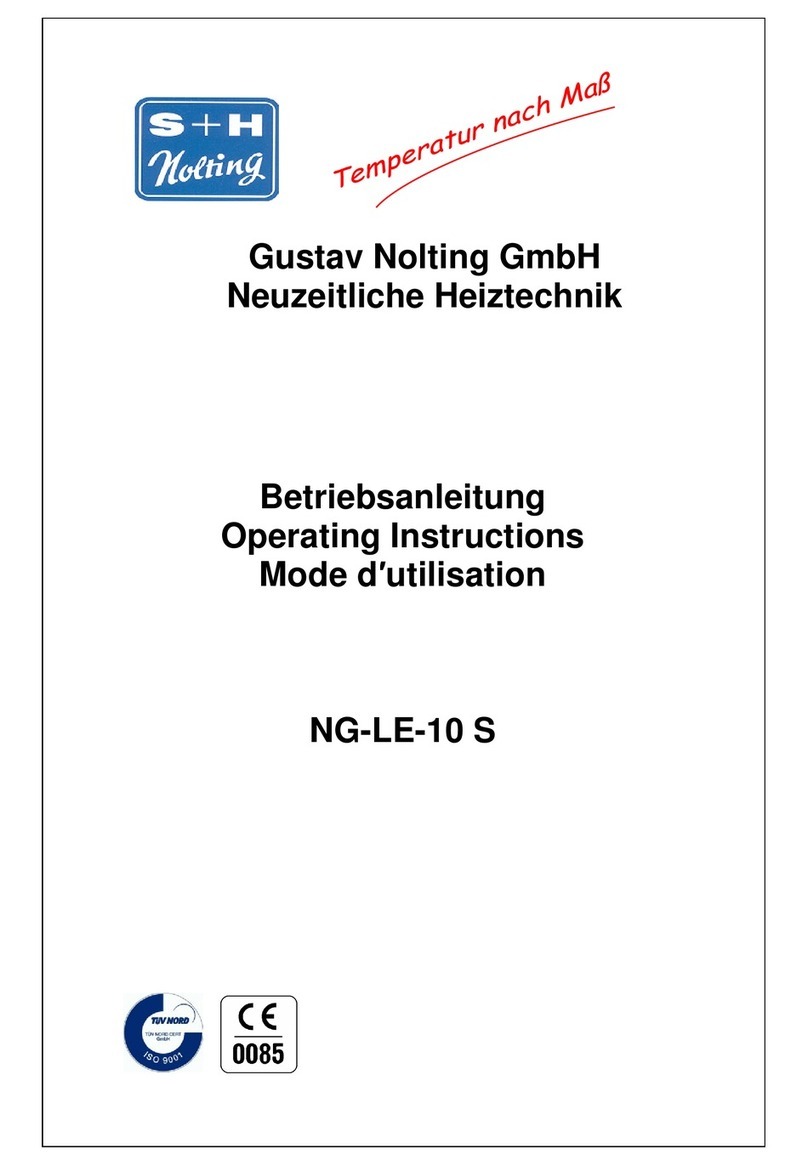
Gustav Nolting
Gustav Nolting NG-LE-10 S operating instructions
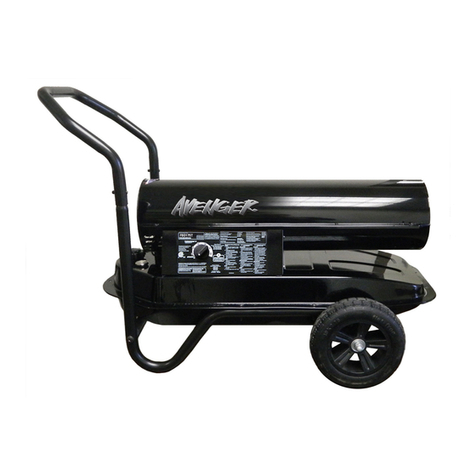
Factory Buys Direct
Factory Buys Direct FBD75T owner's manual
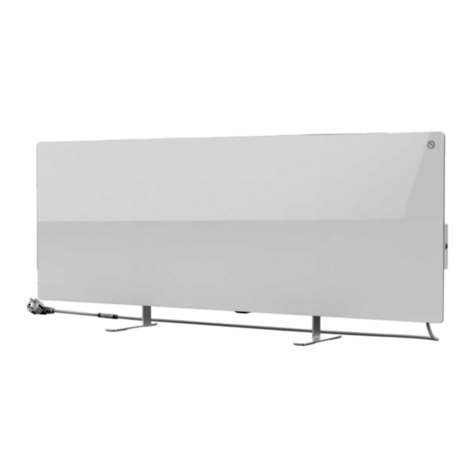
AENO
AENO GH1S Installation and operation manual

emerio
emerio HO-124290 instruction manual
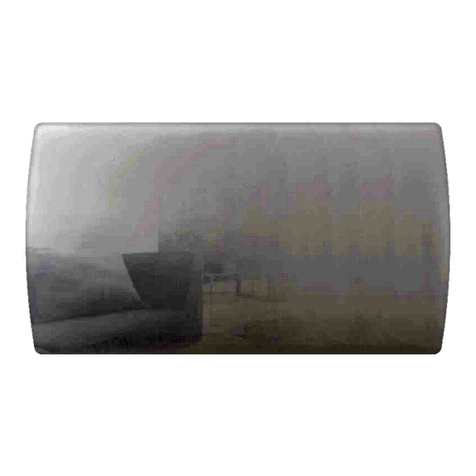
Oceanic
Oceanic OCEAISHGB1000W2 Instruction booklet
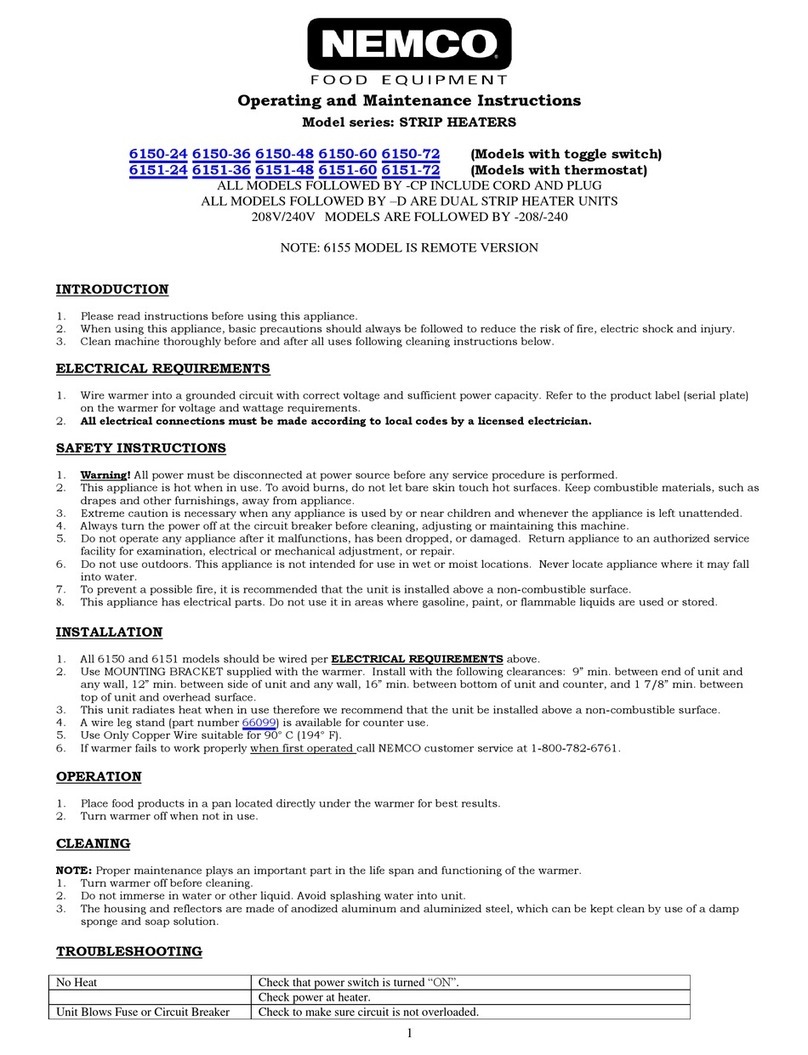
Nemco
Nemco 6150-24 Operating and maintenance instructions
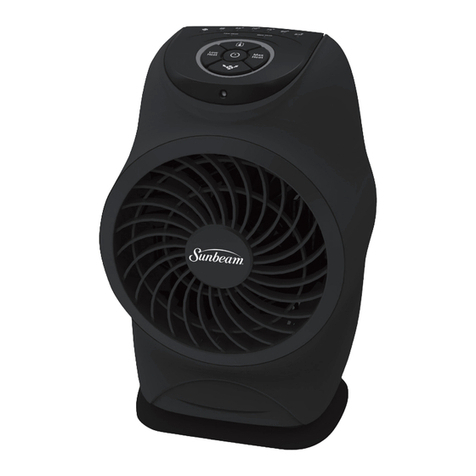
Sunbeam
Sunbeam Calefactor SFH612 instruction manual
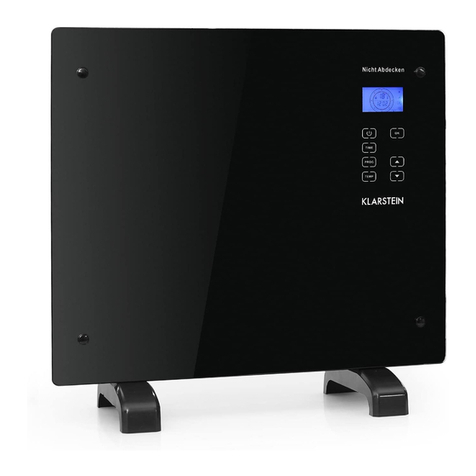
Klarstein
Klarstein 10032787 manual
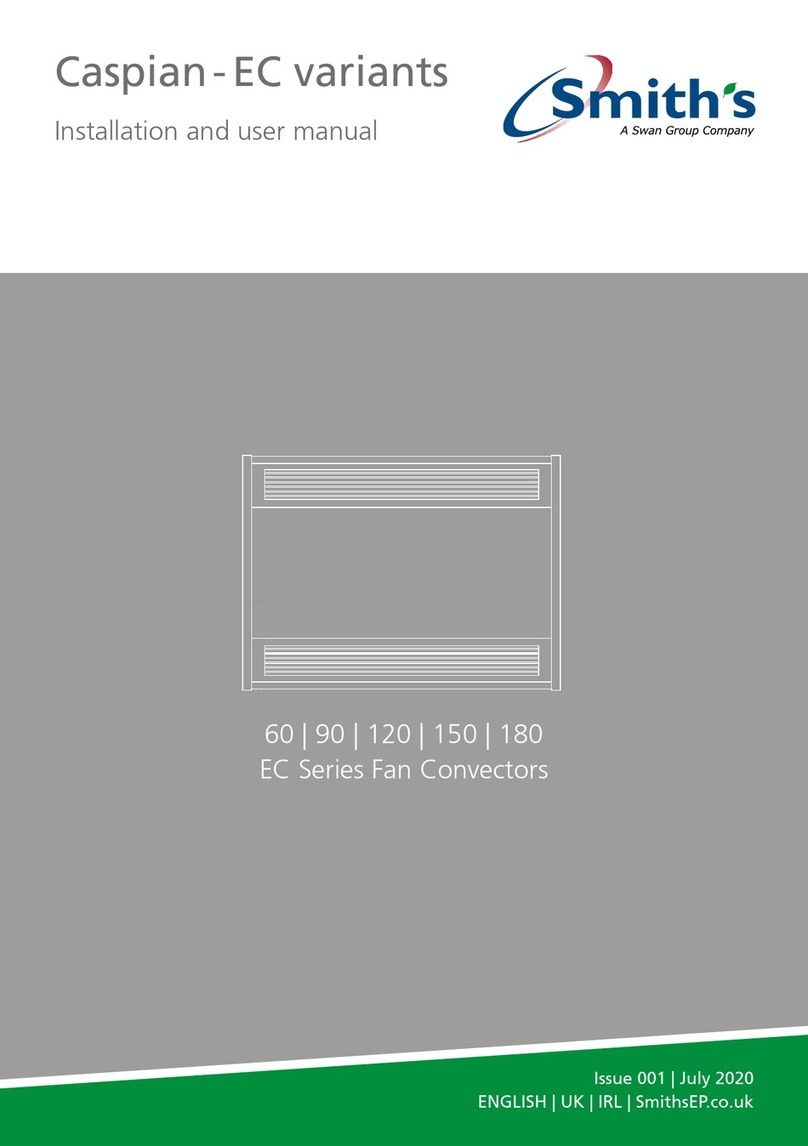
Swann
Swann Smith's Caspian EC Series Installation and user manual
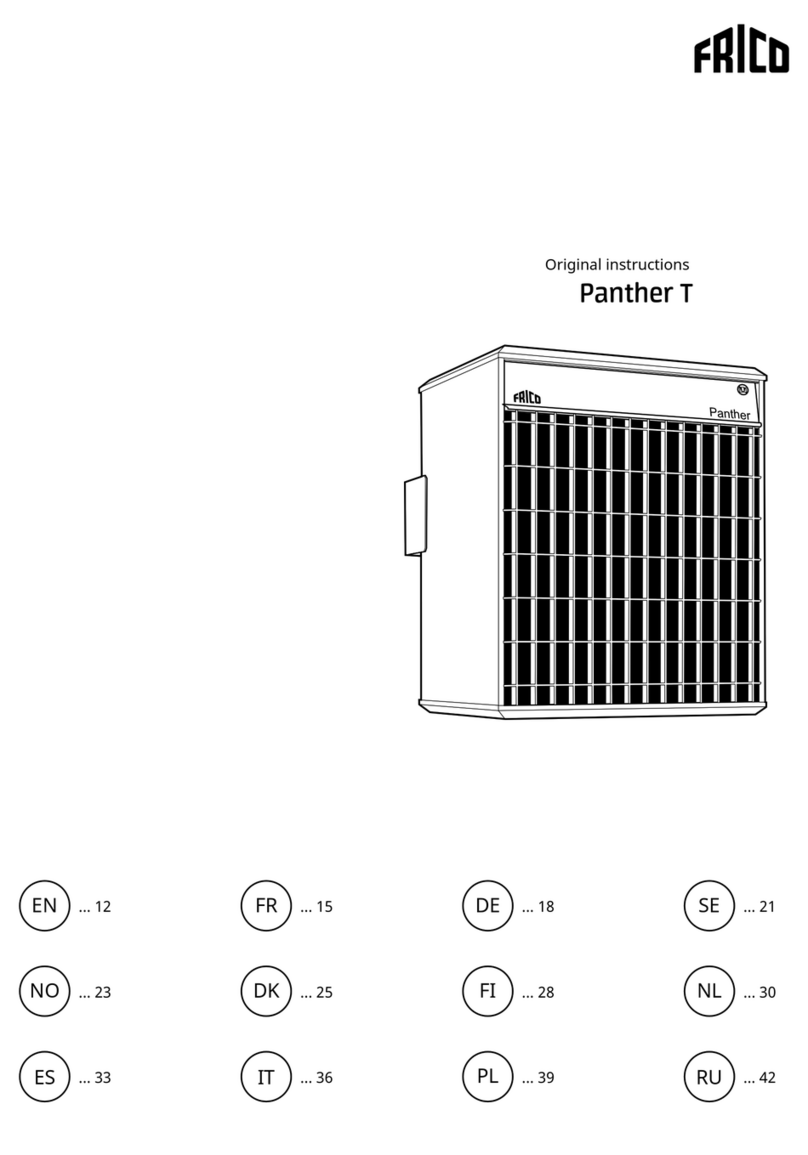
Frico
Frico Panther T Series Original instructions
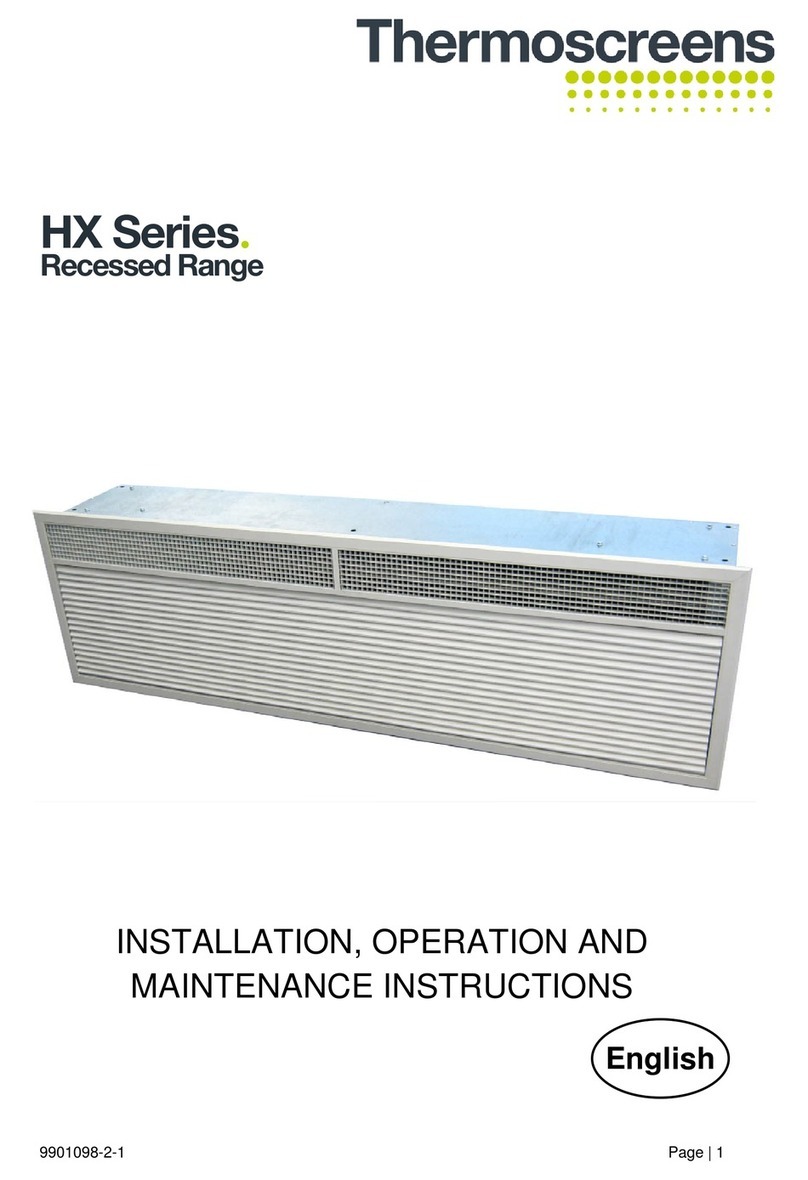
Thermoscreens
Thermoscreens HX Series Installation, operation and maintenance instructions
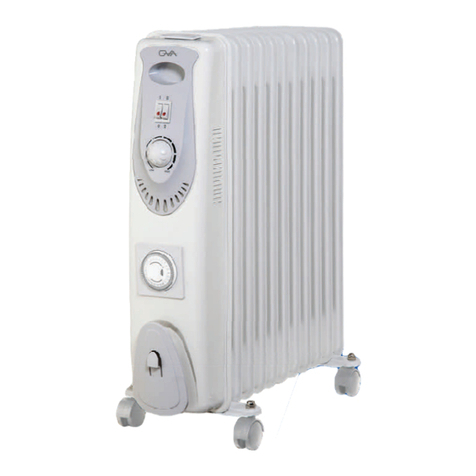
GVA
GVA GVAOR11FT instruction manual


